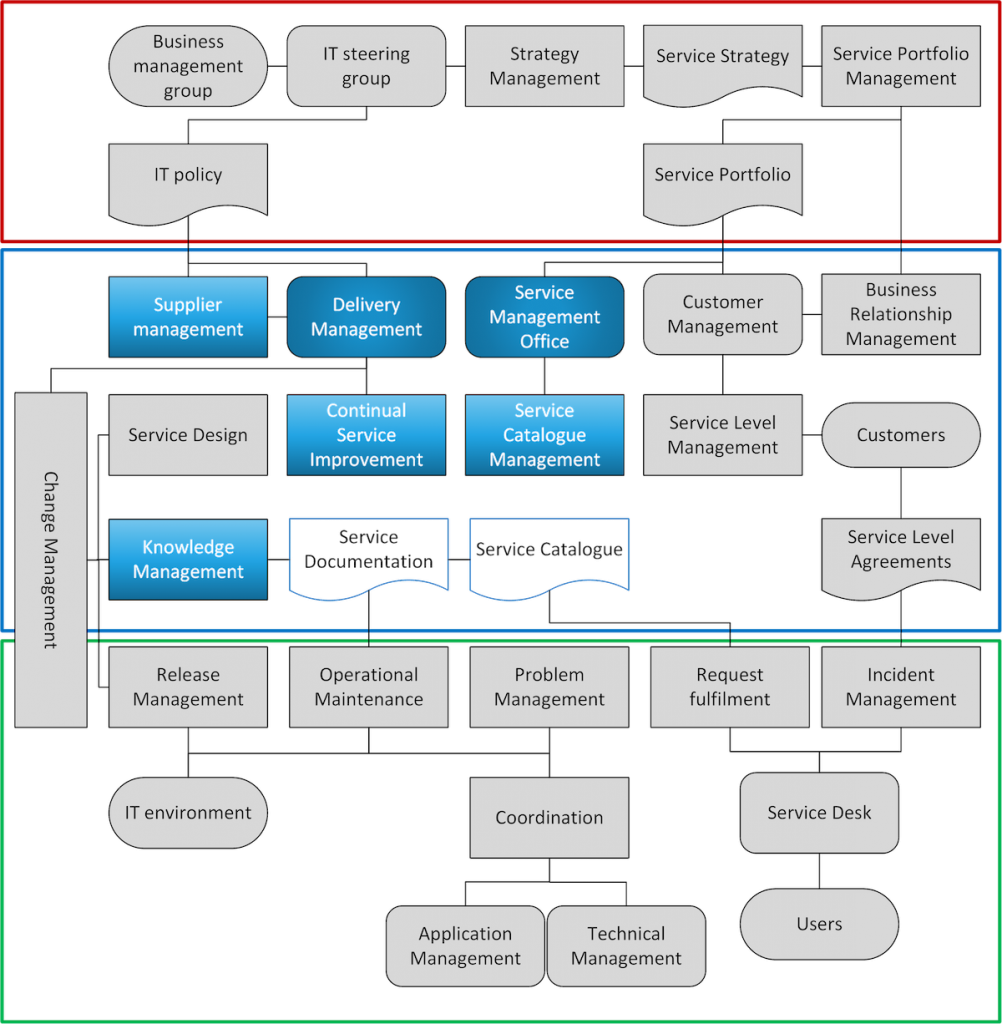The job of Delivery Control is to check and improve the production of IT services. This refers to activities and projects which simplify or modernize the technical environment without affecting the content in the delivery of IT services to the business.
The aim is to reduce time and costs for the operation. However, it can also entail activities with the aim of improving processes, documentation or expertise. A project to improve production with the help of ITIL or this book is an example of increasing internal efficiency.
Scope
Delivery Control comprises responsibility for processes, procedures, documentation, systems and the technology that is required for production of IT services for the business.
Delivery Control includes:
- Responsibility for and documentation of supporting services and products
- Having solid knowledge about and flexibility in the utilization of existing infrastructure and applications
- Financially managing production of IT services
- Maintaining and understanding business-critical systems
- Producing the information and documentation that is needed in operations
- Prioritizing and implementing improvements in the delivery of IT services
- Responsibility for suppliers
Overall flow through Delivery Control
Delivery Control is focused on internal components, which means that the bulk of the input comes from the strategic level and the output goes to the operational level.
Inputs to the phase:
- The service portfolio defines what should be delivered to the business, which sets the parameters for the service catalogue’s supporting services and products
- The IT policy governs how the IT organization should work
- The service catalogue and the agreements with the business govern what should be produced and at which levels
- Changes and requests from suppliers are dealt with by the Delivery Management function via the Supplier Management process
Outputs from the phase:
- The service documentation governs the everyday work at operational level
- Changes managed via the Change Management process


